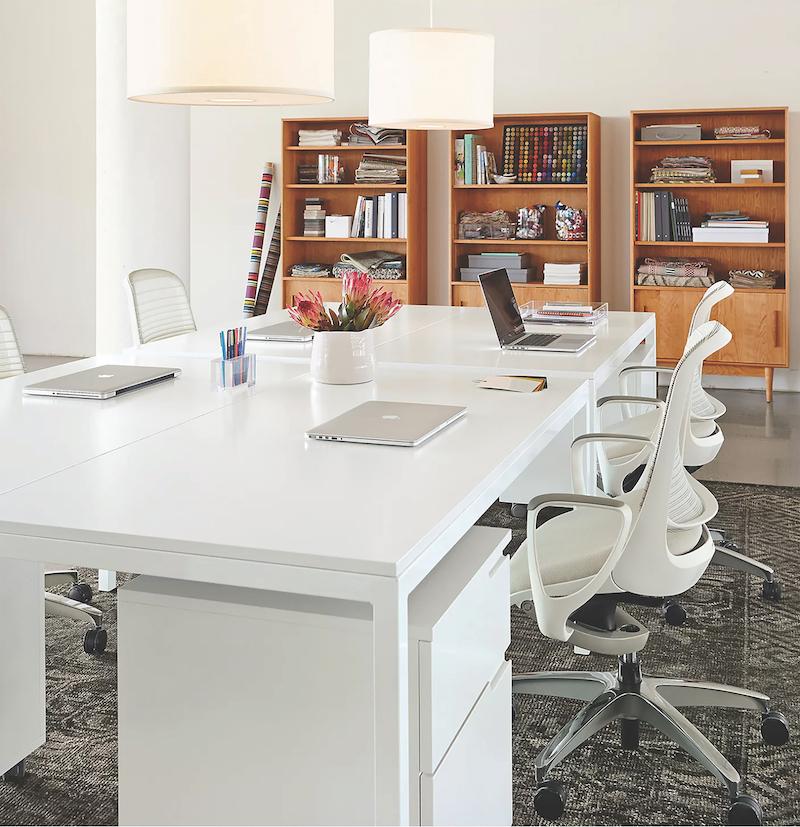With competition for talent high, 61 percent of companies are investing in the design of the office. Creating a space that truly supports all types of workers and cultivates a sense of community, creativity, focus and well-being is paramount to employee happiness and retention.
To reimagine the office as a destination that supports all types of work and work styles, Elise Nicpon from Room & Board Business Interiors (BI) outlines the top five spaces that every company needs for a future-focused, employee-oriented workplace.
Hybrid Meeting Rooms
With 58 percent of the workforce being offered the option to work from home at least one day of the week, virtual meetings are a pandemic-era phenomenon. Staying true to its name, the Hybrid Meeting Room is a versatile space that supports everything from traditional in-person meetings to a combination of in-person and remote conferencing. Visibility, seating arrangements and personal space are the most important features to consider to help all attendees feel comfortable and included. For example, studies indicate that circular seating arrangements, instead of rectangular, remove hierarchy within meetings, promoting inclusivity and equal participation.
Recharge Rooms
The emphasis and prioritization of employee well-being is a trend that is likely here to stay. The Recharge Room is a space dedicated to all aspects of worker well-being, whether it be a space for yoga, quick naps or a moment of solitude. Switching gears from an environment of high productivity to relaxation in the office can be difficult. Establish a clear and distinct break from the rest of the office using softer textures and silhouettes, ambient lighting and warmer colors. Think upholstered sofas and chaises, along with weighted blankets, plush throw pillows or even a high-pile rug to help channel a cozy and soothing atmosphere for relaxation.
Community-Centric Rooms
The office should foster the creation of experiences that are rarely encountered when working from home — connection, engagement and collaboration. Carving out a dedicated community space with comfortable lounge seating where employees can regroup, grab a cup of coffee and connect can help stimulate relaxed, impromptu collaboration and strong workplace culture. The design and decor should reflect the intention of the space, with a focus on comfort and gathering.
Focus Rooms
It is important not to neglect the original purpose of the office as a space for productivity and work. To accommodate those who typically prefer working from home to avoid common office distractions and background noise, create a library-like space for heads-down focus. The Focus Room serves as the perfect counterpart to collaboration spaces, giving employees the option to zone in on work and research without being disturbed.
While the idea may seem counterintuitive, opt for larger communal “work” tables that mimic the library layout. Studies on social identity theory show that engaging in a shared workspace creates a sense of group identity, prompting more awareness of others. In this case, the library effect makes workers more inclined to keep noise levels down so as not to disturb others.
Home Rooms
Nearly 87 percent of employees that are offered remote work spend an average of three days working from home each week. It’s important to equip them with a proper work from home setup too. A comfortable, ergonomic workspace encourages productivity and promotes well-being. Although not in an actual office, home office furniture needs the same quality and durability as commercial spaces to withstand wear and tear from pets, children and everyday use







